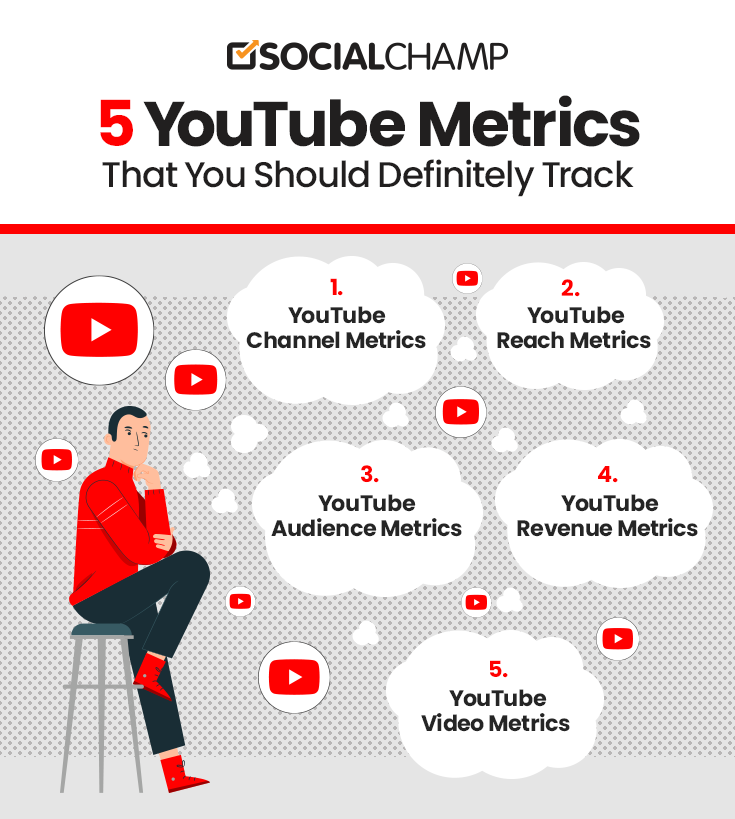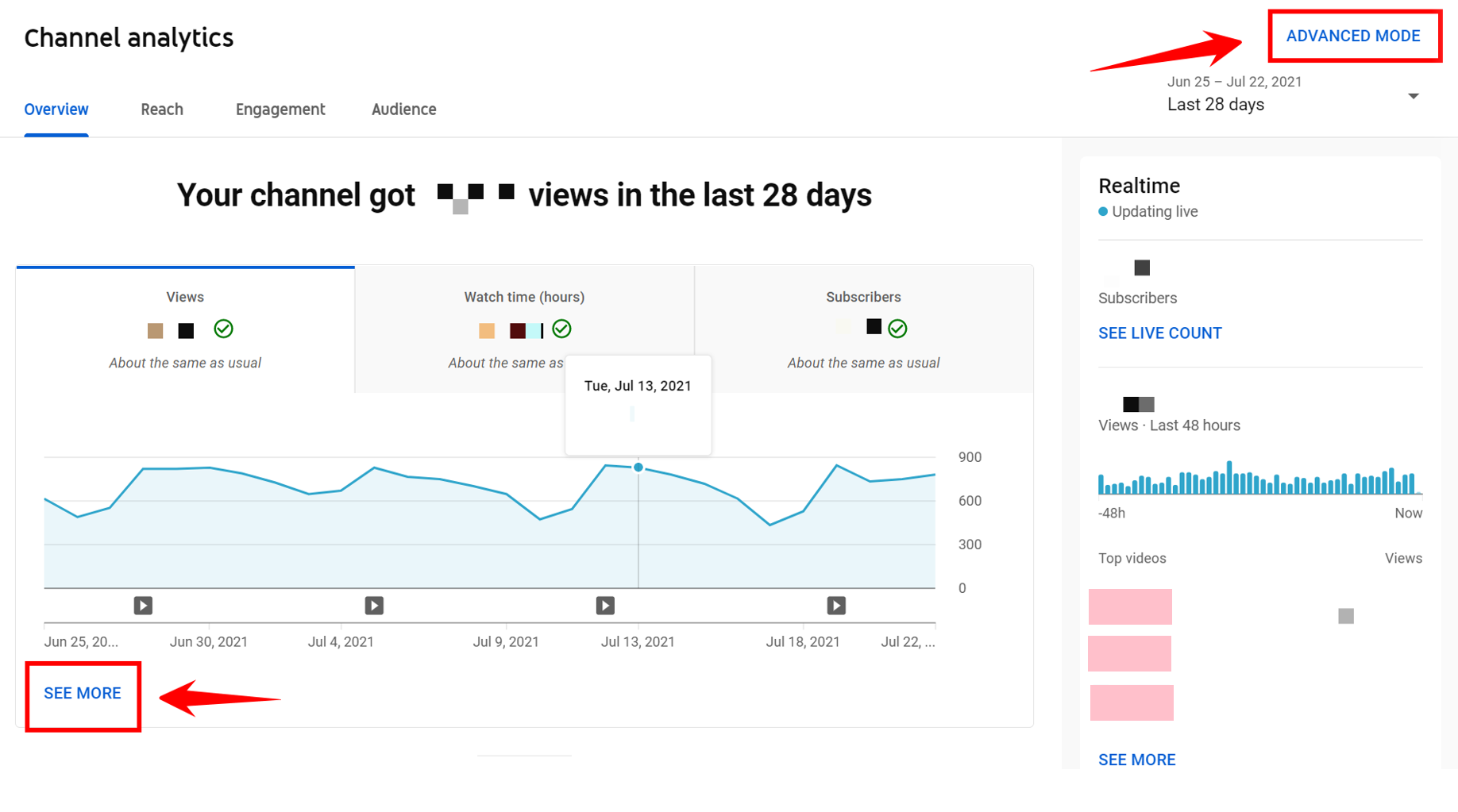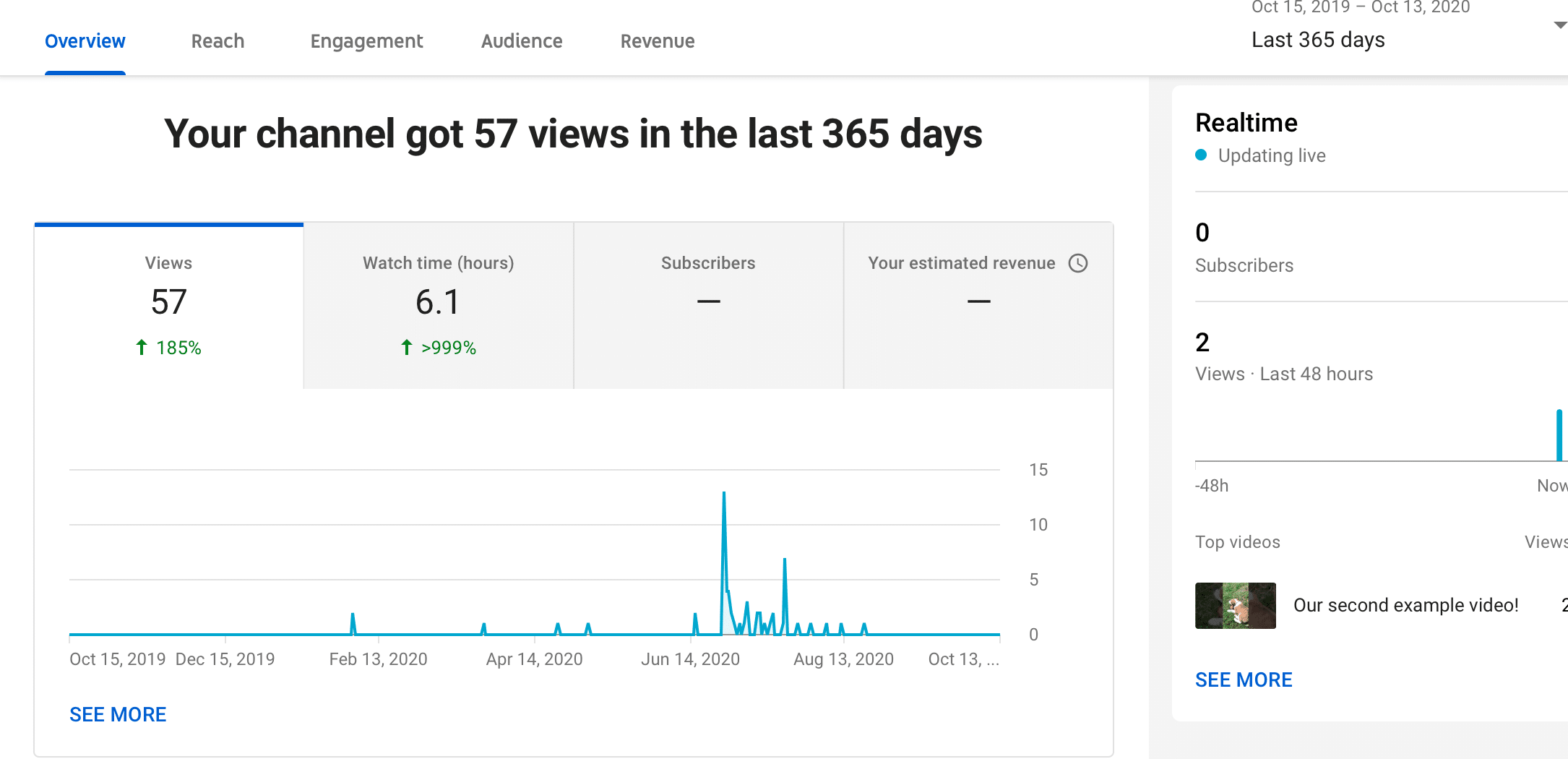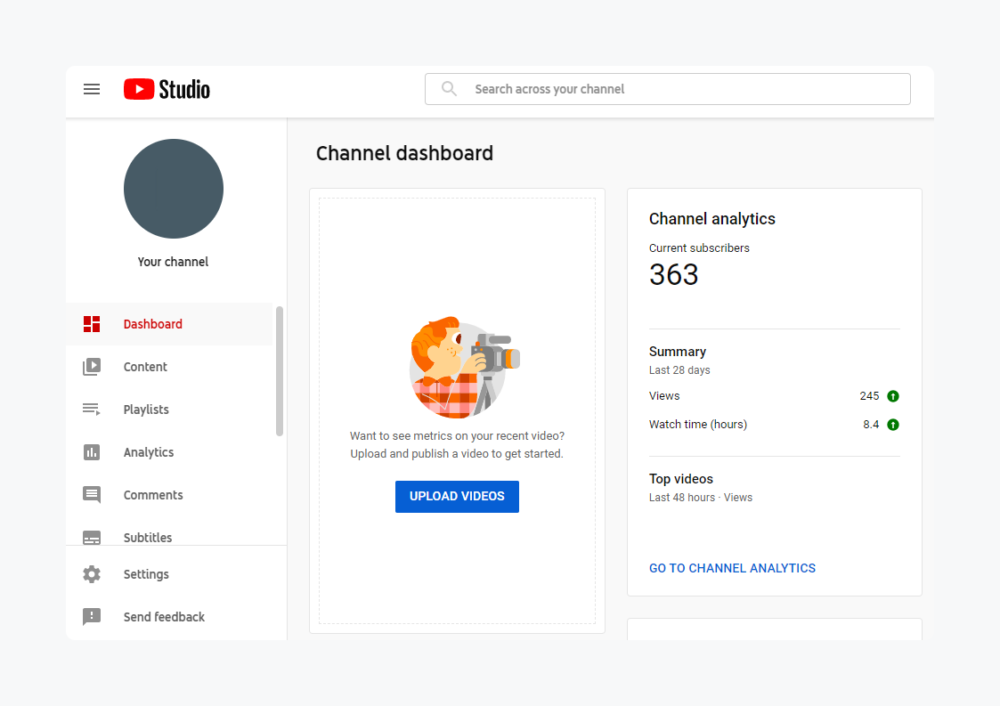YouTube has transformed how we consume video content, but with this convenience comes a crucial aspect: viewer privacy. Understanding how your data is handled on platforms like YouTube is important for maintaining control over your digital footprint. In this article, we’ll dive into the intricacies of
Can YouTubers See Who Viewed Their Videos?

One of the most common questions among YouTube users, especially creators, is whether they can see who exactly viewed their videos. YouTube, recognized for its diverse and expansive audience, has specific privacy rules governing user data. The simple answer is: No, YouTubers cannot see who viewed their videos.
While it may seem intuitive for a content creator to want to know exactly who is watching their hard work, YouTube maintains strict privacy measures to protect its users. Instead of providing specific viewer information, the platform offers aggregated analytics. Let’s break this down further:
- Anonymous Views: YouTube does not disclose individual user identities. When you watch a video, your identity stays private to ensure a safer user experience.
- View Count: Creators can see how many times their video has been watched, but that number doesn't reveal who viewed it.
- Demographic Insights: YouTube provides general analytics about the audience's demographics, such as age, gender, and location, but not specific users.
This means that while creators won't know who their audience is on a one-to-one basis, they can gain insights that help them tailor their content effectively. Analytics tools give a broader understanding of engagement, watch time, and traffic sources:
| Analytics Feature | Description |
|---|---|
| Watch Time | Total number of minutes watched across all views |
| Traffic Sources | Where viewers found your videos (e.g., search, external sites) |
| Audience Retention | How well viewers maintain interest throughout the video |
This aggregate information allows YouTubers to evaluate their content effectively and strategize for future videos. For instance, if a video has a high view count but low audience retention, it suggests that the content might need to be more engaging or that the title doesn’t accurately reflect the content.
Ultimately, while individual viewer identities remain under wraps, the analytics platform equips creators with valuable data to enhance their content and grow their channels. So, as a viewer, you can enjoy watching videos without the pressure of being tracked, knowing that your privacy is preserved while still allowing creators to understand their audience on a broader scale.
Also Read This: What Happened to Lalate on YouTube? Exploring the Mystery Behind the Channel's Absence
3. Understanding YouTube Analytics

YouTube Analytics is a powerful tool that helps creators understand the performance of their videos and their channel. If you're a content creator, diving into your analytics might seem overwhelming at first, but it’s crucial for growth and improving your content strategy. Think of it as your video’s report card, offering insights into what's working and what could use some tweaking.
At its core, YouTube Analytics provides statistics about how your videos are performing. It allows you to track engagement, viewer demographics, and much more. Here are some key aspects to grasp:
- Accessing YouTube Analytics: To get started, simply log into your YouTube account, go to YouTube Studio, and select the "Analytics" tab. Here, you'll find an overview of your channel's performance.
- Real-time Data: One of the standout features is the real-time analytics, which lets you see how your videos are performing right at that moment. This is particularly thrilling when you launch a new video!
- Overview Dashboard: The dashboard provides a summary of key metrics, such as views, watch time, and subscriber count. This is your quick view of how you’re doing.
Breaking down the data into digestible segments will make it easier to understand your content’s impact. YouTube segments metrics into different ranges of time – like the last 28 days, the past year, or even a custom date range. Use this flexibility to spot trends over time.
Your understanding of analytics doesn’t just end with numbers; it evolves as you learn more about your audience's habits. For instance, you can analyze which videos lead to the highest subscriber gains, or discover what's keeping viewers engaged and watching to the end. Engaging with your audience becomes more purposeful when you know what content resonates with them.
In essence, YouTube Analytics is not just a metric-tracking mechanism; it's a means to enhance your creativity based on factual data. Embrace it, and over time, you'll start seeing your channel thrive!
Also Read This: How to Capture Gameplay for YouTube: Recording Tips for Gamers
4. The Metrics YouTube Provides to Creators

As you explore YouTube Analytics, you’ll encounter a treasure trove of metrics at your fingertips. Let’s break down the most important ones that every creator should pay attention to:
| Metric | Description |
|---|---|
| Views | The total number of times your videos have been watched. It’s your primary indicator of reach. |
| Watch Time | Measuring the total minutes viewed across all your videos. This is crucial for YouTube’s algorithm in promoting your content. |
| Subscribers | The number of new subscribers gained or lost over a defined period. An essential measure of channel growth. |
| Click-Through Rate (CTR) | This percentage shows how many users clicked on your video after seeing its thumbnail. A high CTR indicates an appealing thumbnail and title! |
| Engagement Metrics | Likes, comments, and shares of your videos. These interactions signal to YouTube that viewers value your content, which can boost visibility. |
| Traffic Sources | This tells you where viewers are finding your videos, whether it's from search results, suggested videos, external websites, or social media. |
Each of these metrics tells a part of the story about your content's performance and your viewers’ preferences. For example, a low CTR might suggest you need to rethink your video titles or thumbnails, while high watch time could indicate that your content is hitting the mark.
Remember, the goal isn’t just to chase numbers but to understand and adapt accordingly. Analyze these metrics regularly, set goals based on your findings, and watch your channel evolve. Your audience’s feedback is invaluable, and with YouTube Analytics, you have the perfect tool to tune into their preferences and create content that resonates with them.
Also Read This: Who Owns YouTube? A Deep Dive into the Platform’s History and Ownership
5. Implications for Viewer Privacy

As we dive deeper into the world of YouTube analytics and viewer privacy, it's important to understand the implications that arise when you watch videos on this platform. YouTube collects a vast amount of data to enhance user experience, but this also raises several privacy concerns that light up a debate among viewers and creators alike.
One of the primary issues is how data collection occurs behind the scenes. YouTube tracks various metrics, such as:
- Watch time
- Engagement rates (likes, comments, shares)
- Demographic information (age, gender, location)
- Device types and operating systems used
This information is not just aggregated randomly; it's used to tailor content recommendations and advertisements. While personalized ads can enhance user experience, many viewers express concern about how much information is being collected and to what extent it can be used.
Privacy policies are crucial here. YouTube provides users with mechanisms to manage their privacy settings, including:
- Adjusting ad settings
- Controlling the data YouTube can collect
- Managing what content is visible to others on their channels
However, many users may not take advantage of these settings, either due to lack of knowledge or simply because they trust the platform. This brings about the larger issue of informed consent. Are viewers fully aware of the extent to which their data is collected and used? It's a question that continuously lingers in the back of many minds.
Creators also play a role in viewer privacy. When making content, they collect insights from analytics that can inform them about their audience, but how they use this information can affect viewer trust. Creators should be transparent and ethical, respecting viewer confidentiality while utilizing these analytical tools.
In conclusion, Facebook's approach to data privacy has implications not just for viewers but also for creators. As a community, there needs to be a balance between data utilization for content improvement and the ethical considerations regarding viewer privacy.
Also Read This: Uploading Videos from Facebook to YouTube: A Complete How-To Guide
6. How Creators Use Analytics to Improve Content
As a content creator on YouTube, understanding and utilizing analytics is key to not just surviving but thriving in the competitive landscape. The data available to creators can be a goldmine when it comes to improving content and reaching more viewers.
So, how exactly do creators leverage this data? Here are some strategies they employ:
- Identifying Trends: By analyzing what types of videos get more views, creators can spot trends in viewer preferences. For example, if “unboxing videos” are seeing a spike in views, a creator might decide to produce more content in that niche.
- Understanding Viewer Demographics: Knowing who their audience is allows creators to tailor their content to better suit their viewers’ interests and needs. Demographic data can reveal age groups, genders, and geographical locations that are particularly engaged with the creator's content.
- Optimizing Video Length: Watching the “average view duration” metric helps creators understand how long viewers are staying engaged. If viewers consistently drop off at a certain point, adjustments can be made to keep them watching longer.
- Testing Thumbnails and Titles: Different thumbnails and titles can drastically change click-through rates. Analytics help creators identify which combinations bring in more views, allowing them to refine their approach.
- Engagement Analysis: Creators look at likes, shares, comments, and the overall engagement each video receives. This feedback can spur ideas for follow-up content, collaborations, or even tweaking their style to better resonate with the audience.
In essence, analytics isn’t just numbers on a screen; it’s a roadmap for growth. By continuously exploring this data, creators can adapt, innovate, and produce content that resonates more deeply with their audience, fostering a loyal viewer base. Ultimately, this connection can lead to a more engaged community and bolster a creator’s success on the platform.
So whether you're a seasoned creator or just starting, recognizing and using YouTube analytics effectively can truly make a difference. Jump in, explore your data, and let's elevate your content to new heights!
Also Read This: Which Popular YouTubers Live in California? A Peek at the Creator Community
7. Myths and Misconceptions About YouTube Viewer Tracking
When it comes to YouTube viewer tracking, there’s a lot of misinformation floating around. Many people harbor misconceptions that can skew their understanding of how their privacy is respected—or not respected—by the platform. Let's debunk some of the most common myths that can lead to confusion.
Myth 1: YouTube Can See My Personal Information
One of the biggest fears is that YouTube collects detailed personal information about users, such as their names, addresses, or contact numbers. In reality, while YouTube does collect some data, it is mostly related to user behavior and engagement on the platform, not personal identifiers. For instance, they can analyze the types of videos you watch and how long you stay engaged but not who you are outside of that context.
Myth 2: All Analytics Are Shared with Everyone
Creators often worry that viewership data is public, leading to concerns about privacy for both themselves and their viewers. However, it’s important to note that while creators can access aggregate analytics (like views, watch time, demographics), they do not get specific data about individual viewers. So, your viewing habits remain anonymous, which enhances viewer privacy.
Myth 3: YouTube Trackers Are Invasive
Many users feel that tracking mechanisms are invasive and harmful. The truth is, tracking helps improve user experiences by providing relevant content and ensuring recommendations meet individual preferences. It’s the same technology that's used in many popular platforms, and they all work under strict regulations regarding user privacy.
Myth 4: Opting Out of Tracking Means Losing Access to Features
There's a prevalent belief that opting out of tracking means losing out on essential features. While you may limit some personalization, you can still enjoy the core functionalities of YouTube, such as watching videos or subscribing to channels. Many users choose to be tracked for a tailored experience, but the option to opt out is there if privacy is a priority.
Myth 5: You Can Hide from Tracking Completely
Lastly, many think it's possible to completely hide from tracking online, but that's not entirely true. Although you can minimize the amount of data shared through browser settings or using privacy-focused tools, almost every online platform, including social media sites, does some level of tracking. It's part of how they understand and serve their users better.
8. Conclusion: Balancing Creator Insights and Viewer Privacy
In today's digital age, understanding the balance between creator insights and viewer privacy is more critical than ever. As creators continue to use analytics to tailor content and engage audiences, they must also stay conscious of how this affects viewer trust and privacy.
On one hand, analytics are invaluable. They provide creators with insights into what works, what doesn’t, and how their audience engages with content. This data-driven approach empowers creators to enhance their videos, leading to better production quality and more tailored content. But it’s essential that creators respect their viewers' privacy in this process.
Here are a few key takeaways to consider:
- Transparency: Creators should be clear about the data they collect and how they use it. This builds trust with the audience.
- Empowerment: Viewers should have options to control their data. Allowing privacy settings that let them choose their level of engagement can enhance trust.
- Shared Responsibility: Both parties—YouTube and its users—play a role in ensuring a safe and informed environment. Understanding each other's concerns can bridge the gap.
Ultimately, the goal should be to create an enjoyable viewing experience while respecting viewers' privacy. When both creators and audiences understand their roles in this relationship, it paves the way for a more sustainable and trustworthy platform. So, whether you're a creator seeking insights or a viewer prioritizing privacy, finding a middle ground can lead to a more fulfilling YouTube experience for everyone involved.
 admin
admin








